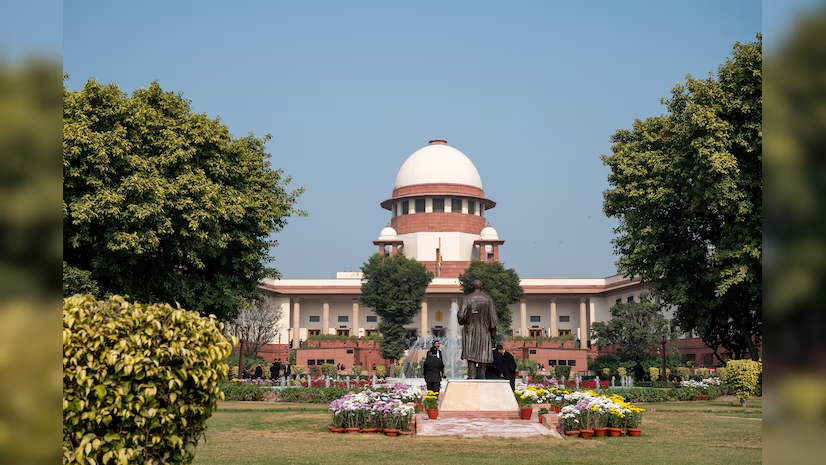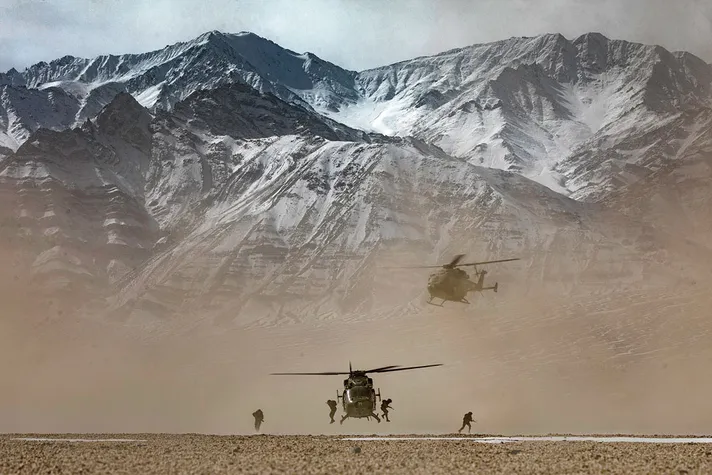- Courses
- GS Full Course 1 Year
- GS Full Course 2 Year
- GS Full Course 3 Year
- GS Full Course Till Selection
- Online Program
- GS Recorded Course
- NCERT (Recorded 500+ Hours)
- Polity Recorded Course
- Geography Recorded Course
- Economy Recorded Course
- AMAC Recorded Course
- Modern India, Post Independence & World History
- Environment Recoded Course
- Governance Recoded Course
- Science & Tech. Recoded Course
- International Relations and Internal Security Recorded Course
- Disaster Management Module Course
- Ethics Recoded Course
- Essay Recoded Course
- Current Affairs Recoded Course
- CSAT
- 5 LAYERED ARJUNA Mentorship
- Public Administration Optional
- ABOUT US
- OUR TOPPERS
- TEST SERIES
- FREE STUDY MATERIAL
- VIDEOS
- CONTACT US
Supreme Court lays down rules for preventive detention
Supreme Court lays down rules for preventive detention

In the recent Jaseela Shaji vs. Union of India case (2024), the Supreme Court established new standards for preventive detention. The case challenged a detention order under the Conservation of Foreign Exchange and Prevention of Smuggling Activities Act (COFEPOSA) of 1974, which had been upheld by the Kerala High Court.
What are the New Standards for Preventive Detention?
- Fair and Effective Opportunity: The Supreme Court ruled that the detaining authority must provide the detainee with copies of all documents relied upon for their detention. Failure to do so renders the detention invalid.
- Constitutional Right: Personal liberty is a fundamental constitutional right. The court emphasized that not providing relevant documents to challenge the detention violates Article 22(5) of the Constitution.
- Non-Arbitrary Actions: Authorities must avoid arbitrary actions and ensure detainees’ rights are respected. This includes providing documents in a language the detainee can understand.
- Avoiding Undue Delay: Timely communication regarding detention is essential. Authorities should use available technology to prevent unnecessary delays.
Key Facts About Protection Against Arrest and Detention
Constitutional Basis:
- Article 22 of the Indian Constitution provides protections for individuals who are arrested or detained, ensuring their fundamental rights under various circumstances.
Types of Detention:
- Punitive Detention: Imposed after a trial and conviction for a committed offense, following due process of law.
- Preventive Detention: Imposed without trial, aimed at preventing a future offense based on suspicion, serving as a precautionary measure.
Parts of Article 22:
- First Part: Covers rights under ordinary law:
- Right to be informed of the grounds for arrest.
- Right to legal representation.
- Right to prompt judicial review.
- Right against prolonged detention.
- Second Part: Specifically covers preventive detention:
- Maximum Detention without Review: Detention cannot exceed three months without an advisory board's report.
- Communication of Grounds: Grounds for detention must be communicated, though certain facts may be withheld.
- Right to Representation: The detainee should have the opportunity to challenge the detention order.
Legislative Power on Preventive Detention:
- Parliament: Can make laws related to preventive detention for national defense, foreign affairs, and national security.
- State Legislatures: Can make laws for state security, public order, and essential services.
- Parliament's Extension Power: Can define circumstances for detention beyond three months and specify the advisory board's procedure.
Key Amendments:
- The 44th Amendment Act, 1978, proposed reducing detention without advisory board approval from three to two months. This amendment has not been implemented, so the original three-month period remains.
Preventive Detention Laws in India:
-
Maintenance of Internal Security Act (MISA), 1971 (Repealed 1978)
-
COFEPOSA, 1974
-
National Security Act (NSA), 1980
-
Terrorist and Disruptive Activities (Prevention) Act (TADA), 1985 (Repealed 1995)
-
Prevention of Terrorism Act (POTA), 2002 (Repealed 2004)
-
Unlawful Activities (Prevention) Act (UAPA), 1967 (Amended several times)
Criticism of Preventive Detention in India:
- Global Perspective: Unlike many democratic countries, India integrates preventive detention into its Constitution. It is unknown in the United States and was limited to wartime Britain.
- Historical Context: Preventive detention existed even under British rule, such as the Bengal State Prisoners Regulation, 1818.
- Issues with Preventive Detention Law:
- Misuse of Law: Concerns exist about preventive detention being used for political gain or suppressing free speech. Examples include its use for trivial matters like local disputes.
- Lack of Checks and Balances: Broad powers with limited judicial oversight increase the risk of misuse. Judicial scrutiny is often limited to procedural aspects, not the merits of detention.
- Lack of Transparency: Frequent use of detention to curb dissent suggests a need for more accountability.
- Colonial-Era Laws: Some laws date back to colonial times and may not meet modern human rights standards.
Important Judicial Cases Related to Preventive Detention:
- Shibban Lal v. State of Uttar Pradesh (1954): SC held that courts cannot inquire into the factual basis of detention, limiting judicial intervention.
- Khudiram v. State of West Bengal (1975): SC ruled it cannot assess the validity of grounds for detention under MISA.
- Nand Lal Bajaj v. State of Punjab (1981): Acknowledged inconsistency with parliamentary principles but deemed it a political issue.
- Rekha v. State of Tamil Nadu (2011): Called preventive detention "repugnant to democratic ideas" and stressed narrow application.
- Mariappan v. District Collector (2014): Emphasized that preventive detention should prevent harm, not punish.
- Prem Narayan v. Union of India (2019): Stated that preventive detention infringes on personal freedom and should not be imposed casually.
- Abhayraj Gupta v. Superintendent, Central Jail, Bareilly (2021): Held that preventive detention should not be used when a person is already detained unless there is widespread disorder.
Conclusion
Preventive detention in India, while constitutionally permissible, often challenges democratic principles and personal liberty. Despite its role in national security, unchecked powers risk infringing on fundamental rights. To balance security with human rights, reforms are necessary to ensure a fair process and prevent abuse. Modernizing colonial-era laws is essential to making preventive detention just and reasonable in contemporary India.
Must Check: Best IAS Coaching In Delhi
UPSC Prelims Result 2024 Out: Expected Cut Off & Other Details, UPSC Prelims 2024 Answer with Explanation, Daily Prelims Quiz, Daily Current Affairs, MONTHLY CURRENT AFFAIRS TOTAL (CAT) MAGAZINE, Best IAS Coaching Institute in Karol Bagh, Best IAS Coaching Institute in Delhi, Daily Mains Question Answer Practice, ENSURE IAS UPSC Toppers, UPSC Toppers Marksheet, Previous Year Interview Questions, UPSC Syllabus




